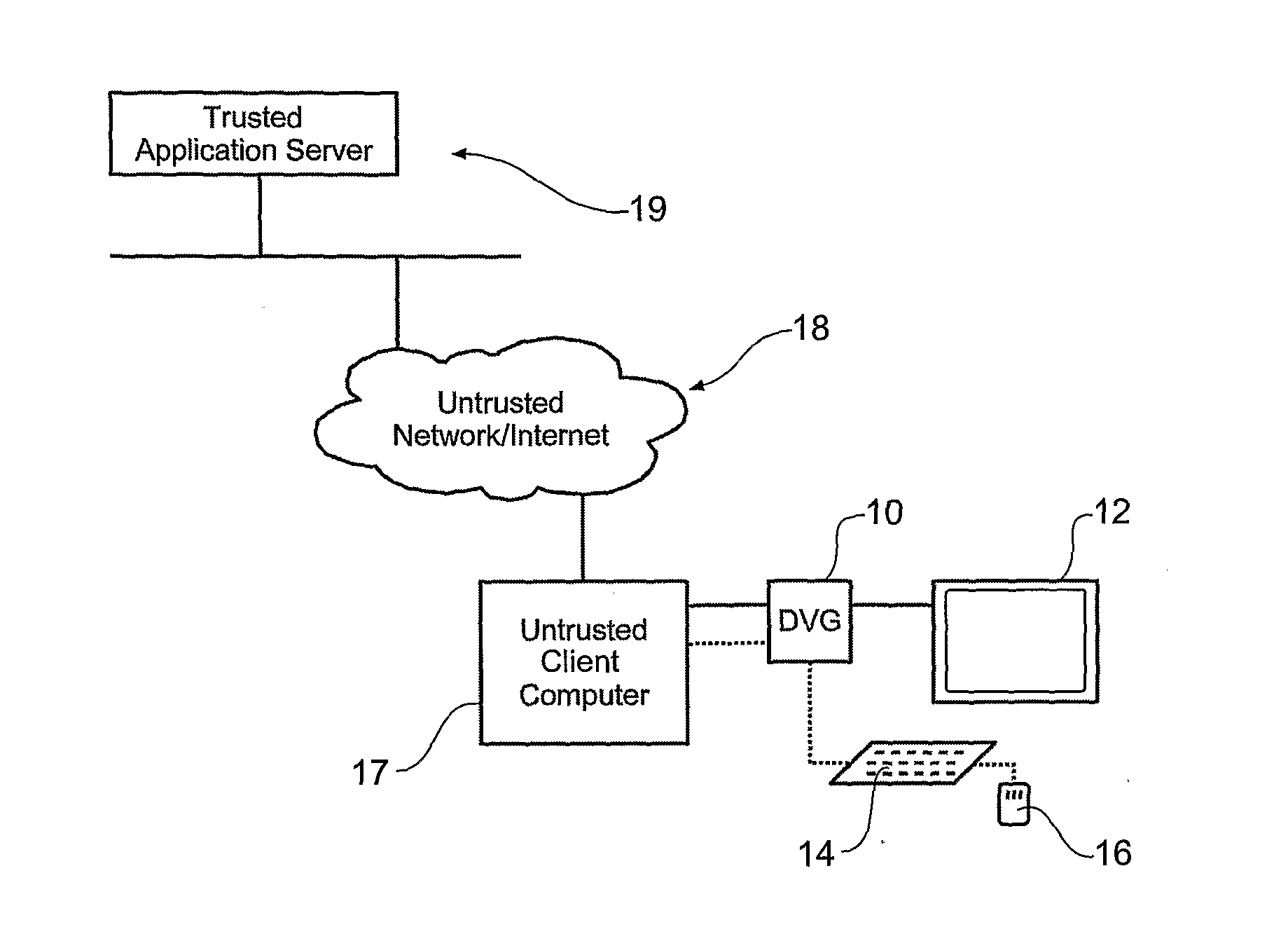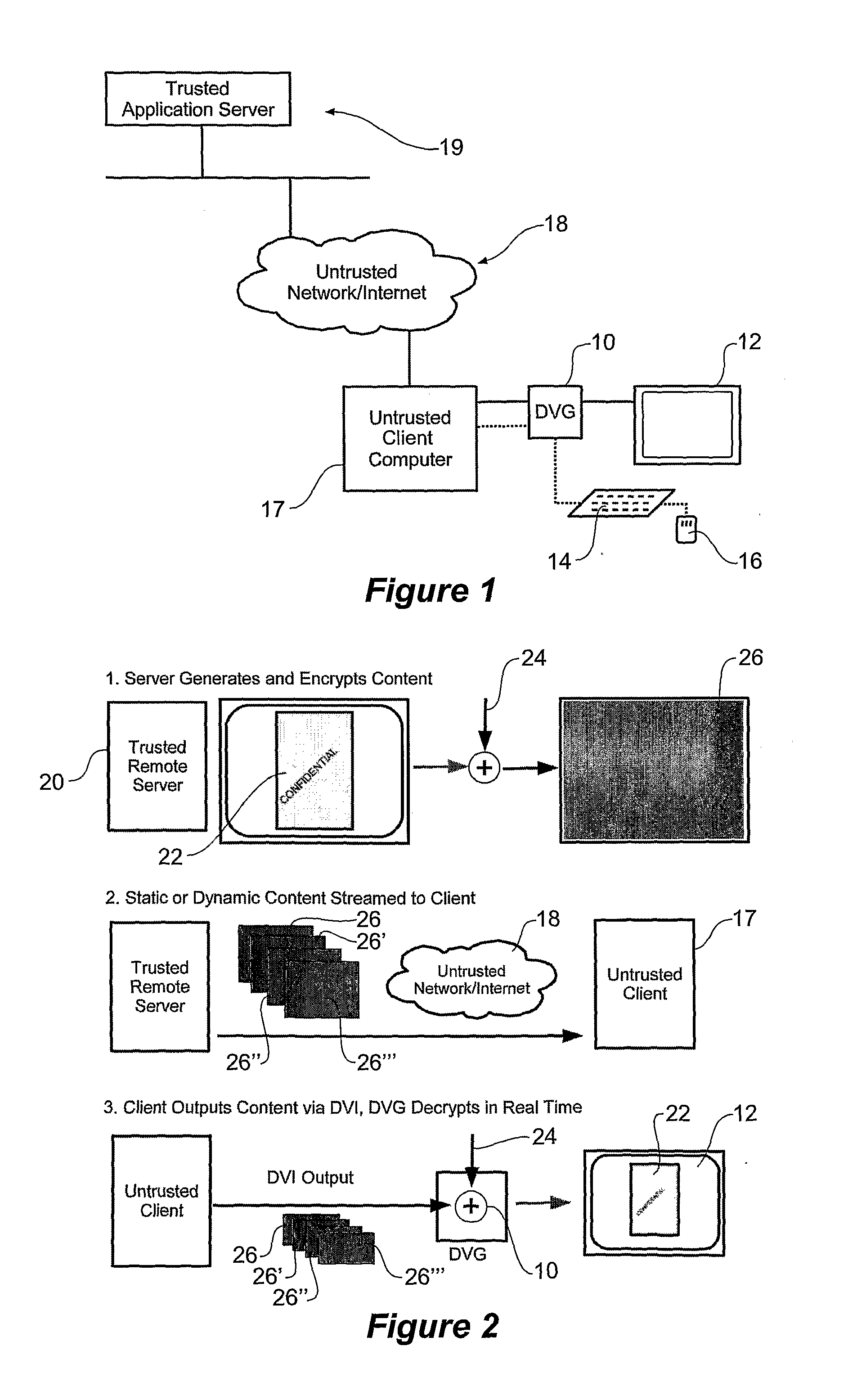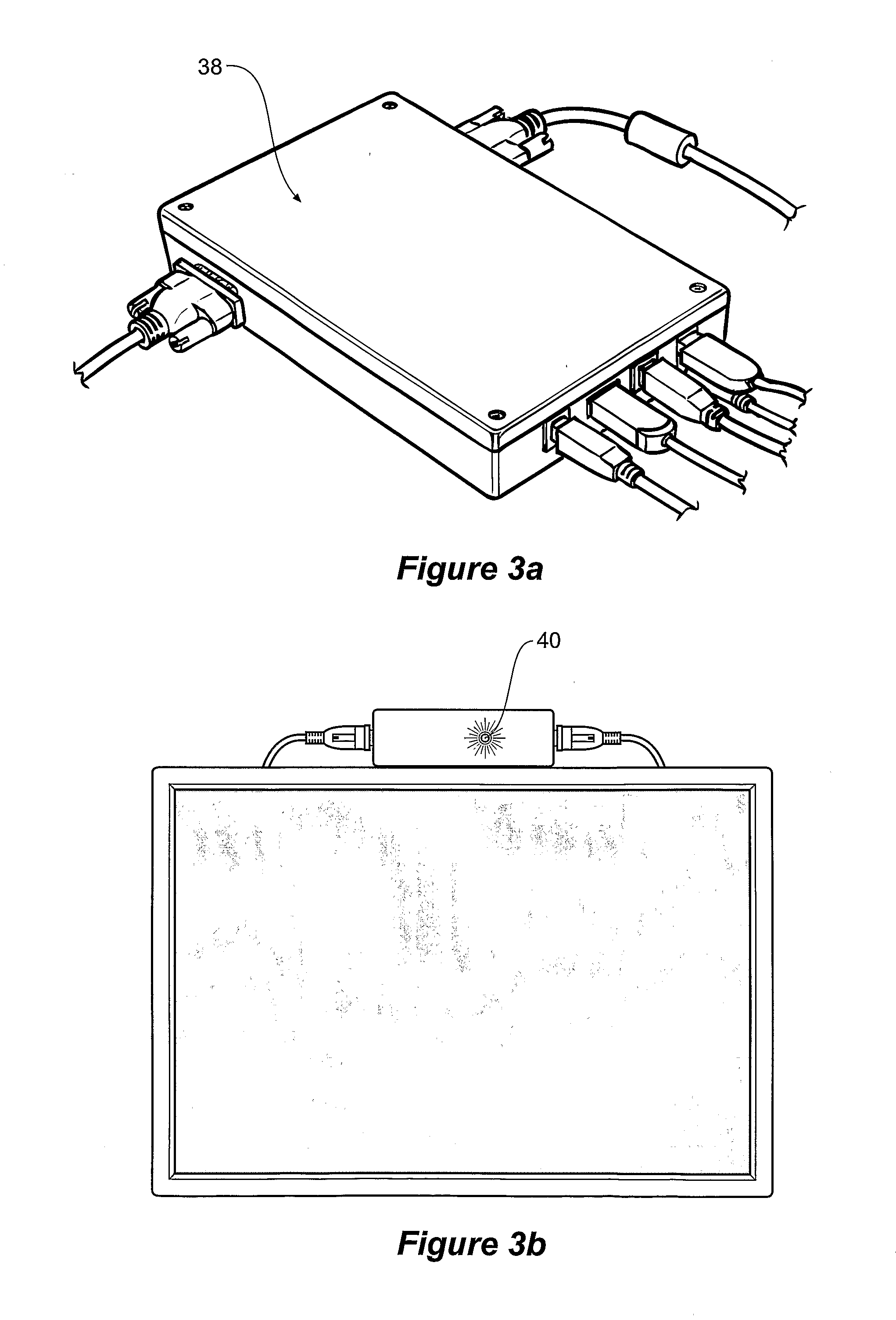Digital video guard
a digital video and video guard technology, applied in the field of veracity of information, can solve the problems users will find it difficult to determine the integrity of visual information presented, and users will find it difficult for users to determine the integrity of presented information, etc., to achieve the effect of increasing the bandwidth of computer networks and simple in-line paths
- Summary
- Abstract
- Description
- Claims
- Application Information
AI Technical Summary
Benefits of technology
Problems solved by technology
Method used
Image
Examples
Embodiment Construction
[0125]The DVG is simple to retrofit between various display and computer devices, includes minimal electronics and complexity, and yet is able to use the advantages of untrusted infrastructure to support delivery of secure, high trust services and content.
[0126]Once the DVG is in place its function will be transparent to the user. In the case of a user wishing to, by way of example, interact with a bank to conduct a banking transaction, access as is typically achieved via the worldwide collection of computers and computer networks referred to as the Internet, and that access is achieved by use of the users browser connecting to a predetermined URL (webpage address) for the bank. One or more 1st level security procedures may be required, such as a login and password, and the use of other more stringent security procedures can be required to allow the user to access to their account. However, unless an appropriate DVG is in place any data destined to be displayed to the user will not ...
PUM
 Login to View More
Login to View More Abstract
Description
Claims
Application Information
 Login to View More
Login to View More - R&D
- Intellectual Property
- Life Sciences
- Materials
- Tech Scout
- Unparalleled Data Quality
- Higher Quality Content
- 60% Fewer Hallucinations
Browse by: Latest US Patents, China's latest patents, Technical Efficacy Thesaurus, Application Domain, Technology Topic, Popular Technical Reports.
© 2025 PatSnap. All rights reserved.Legal|Privacy policy|Modern Slavery Act Transparency Statement|Sitemap|About US| Contact US: help@patsnap.com



